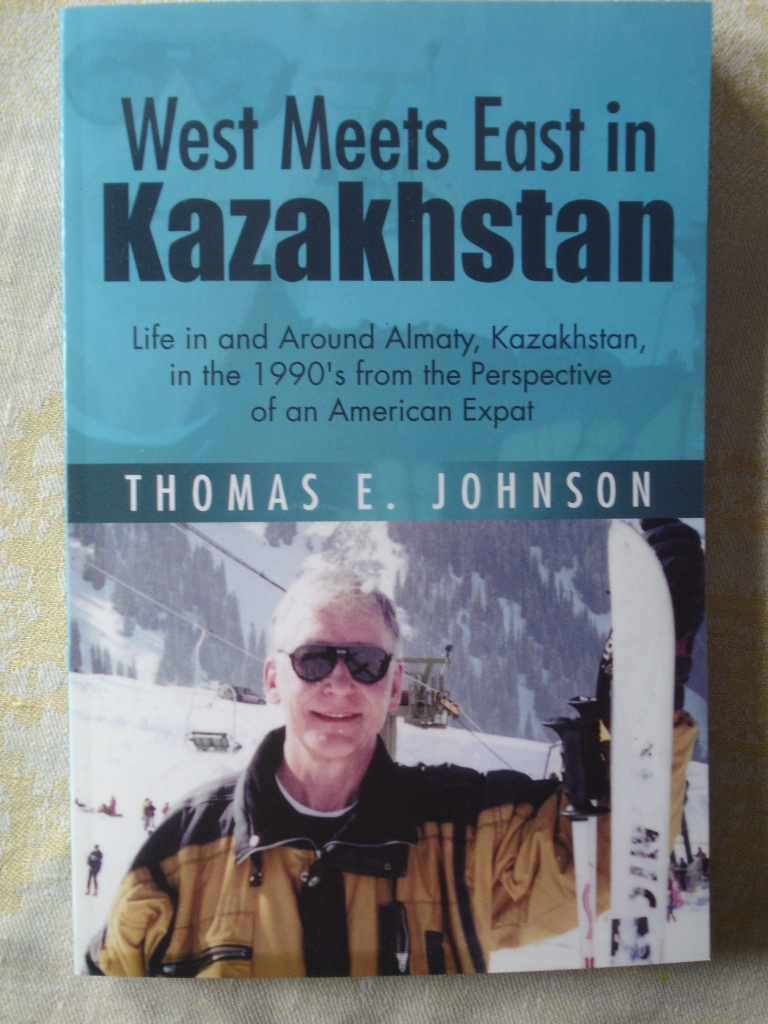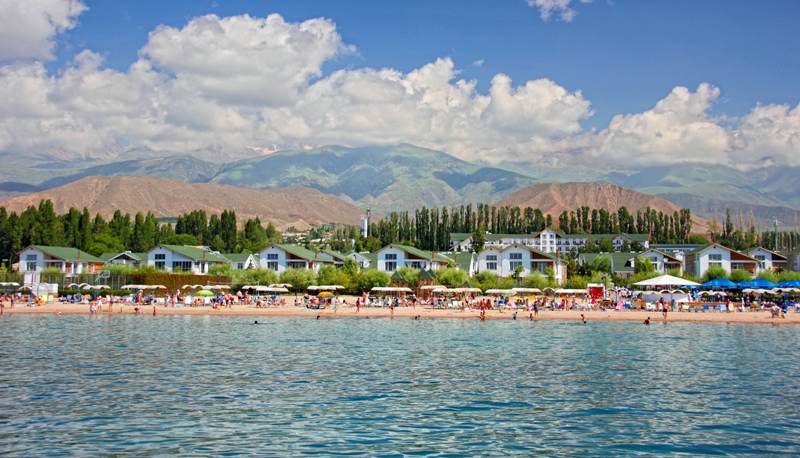In my previous blog post, I made the radical recommendation that ‘people’s resorts’ ought to be established in Kazakhstan. You know, affordable places in the same way as Ferdinand Porsche in 1934 created the Volkswagen as an affordable and reliable means of transport for everyone in Germany.
I thought such resorts were a good way to build the tourism industry, create local jobs, grow GDP and enhance tax revenue for the government. In a word, this would be export substitution that would stem some of that holiday money that otherwise flows to Antalya, Turkey, to Issyk-Kul Lake in Kyrgyzstan or elsewhere.
Having seen the proposal, a friend of mine noted that the cost of a round trip ticket between Almaty and Aktau is very, very high. She didn’t say it but the clear implication was that, at least so far as the 1.7 million people in Almaty and the million people in Astana are concerned, the idea of an ‘affordable’ holiday in Aktau was simply not on.
She has a good point. It’s no good investing in ‘affordable resorts’ if few people can actually afford to get to them.
Internal travel in huge Kazakhstan clearly is a challenge – airfares are expensive and roads can be bad.
The obvious solution of the airfare problem is to reduce the fares to holiday destinations within Kazakhstan. But is this a reasonable prospect? I think so.
In the West, international flights to holiday destinations are comparatively inexpensive due to very high volume usage of the airplanes. They fly full of passengers and they fly often. Very often. I can imagine that, when a pilot at Gatwick Airport in London goes to his plane at 4:00 a.m., he sits down on a warm seat. It is still warm from when the last pilot flew that plane with passengers on its return trip from abroad. Those planes are in the air practically around the clock.
British people are used to the ‘human price’ they pay for relatively cheap package holidays in foreign countries. Take my own example. We flew to Crete, departing from Gatwick at 7:05 a.m. Seemingly not so bad. Ah, but we had to be at the airport two hours before take-off due to the security check, getting seat assignments and checking in our luggage, and so on. And while it takes about an hour to drive from our house to the airport, we budgeted 90 minutes in case of delays on the heavily used M25 motorway. So, in the end, we set our alarm clocks for 2:30 a.m. and left the house at 3:00 a.m.
Why do we do it? For the low price of the package holiday.
Why does the airline do it? So they can maximize the use of the aircraft so as to make profit. With high plane usage and no empty seats, they still make a profit with a low money cost to the passengers.
For the same reason, the resorts can afford to lower their prices for package tour guests because the airline and travel agents assure them of lots of guests. It is in the interests of all to make sure bookings are good.
Apart from having to get up at an ungodly hour for departure, the package tour is a win-win-win situation. (Our return flight to England was very relaxing during the day.)
This happy state of affairs could eventually replicate in Kazakhstan but the missing catalyst is the lack of volume of tourist traffic to internal holiday destinations.
You can quickly see that this is a chicken and egg issue: which comes first, the low fares making the resorts possible or the resorts creating demand for air travel? That is where a supportive government might enter the picture either by regulations or simply by using the bully pulpit to get airlines to moderate prices. If package holidays were sold for 7-day stays, a flight from Almaty could bring in a whole plane load of new guests and then take the departing guests back to Almaty. And if there are multiple resorts, there will be multiple flights.
One way to ‘prime the pump’ would be for the government to grant a subsidy to the airline(s). This might be in the form of giving a one-year subsidy based on the number of empty seats on the holiday-bound airplane. The amount per seat might be less than the passengers pay but, based on an approved business model, it would ensure that the flights are not loss makers. The subsidy would start and end with the open season of the relevant resort.
Alakol Lake presents a different problem, with the rough roads leading to it, but again a supportive government, wanting tourism, might fix the roads if larger volumes of people wanted to use them.
The biggest problem I see is not the present high cost of air travel nor the bad roads; it is the probable lack of financial risk takers. Who will build a credible resort if the transport issue has not already been solved or promised to be solved? And what airline will cater for the holiday traffic if the resorts have not been built? What’s needed is a concerted effort by government and the risk takers.
Photo: The photograph above is of Karven Four Seasons Resort at Issyk-Kul Lake in Kyrgyzstan. Pricey, yes, but at least it begins to show what is possible in terms of developing resort tourism in Central Asia. A resort is more than a place to stay, more than a hotel – entertainment, activities, diversions, new experiences.
oooOOOooo
Book Sales: Find more stories about Kazakhstan from the 1990s and later in my book, West Meets East in Kazakhstan. It’s available online in softcover or e-book format from AuthorHouse (the publisher), or Amazon or Barnes & Noble.
Website: My blog posts go out on Facebook and often on LinkedIn. If you’d like to see them again or check for posts you might have missed, go directly to my website: viewkazakhstan.com


Really interesting perspective. Kazakhstan’s still developing and as such can’t really support a developed tourism industry. Still, it would be great to explore this vast underrated land!
LikeLike
Complicated issue. Yes, the country is still developing. It also has a very large number of people who fly off to other countries for holidays. What’s holding back tourism? Huge country and relatively small population; bad roads (due in part to large country, small population); lack of risk capital; and Big Government intervening with unrealistically big projects. Probably lots more.
LikeLiked by 1 person
Would you say there is a large untapped tourism potential in that case?
LikeLike
I am not aware of any statistics. The country is currently suffering from the drop in the price of oil and the fall off of Chinese demand for other raw materials. The national currency has taken a big hit. So I expect consumer demand for many things has fallen. That may in fact help domestic tourism. Another challenge is that, for many people in Kazakhstan, it is still a treat to go to a foreign country. Issyk-Kul Lake, in Kyrgyzstan, is close but not that close – 7 hours drive and mainly no air connection. That helps Antalya look pretty good for a real foreign holiday. But, to get back to your question, an affordable holiday in Kazakhstan probably will be attractive to (a) people who can only take a once in a lifetime foreign trip, (b) those with children who can’t afford taking everyone overseas, (c) people who would like to see more of their own country, and (d) employer sponsorships of employee holidays. The wealthy and well-paid working elite will continue to go abroad or to one of the few places in-country that cater for them. In truth, it is an untested market. On the one hand, Kazakhstan are proud of their country and its natural assets, which may attract them to local tourism; on the other hand, they can be self-critical and may approach the idea of local resorts critically, wondering if they are simply spruced up Soviet-era Pioneer camps. Anyone developing a local resort will need to pay attention to marketing.
LikeLike
Opps. I should have said ‘Kazakhstanis are proud of their country…’
LikeLike